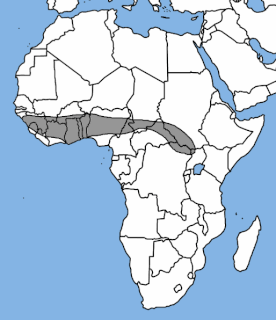
The Aba roundleaf bat, also known as the Aba leaf-nosed bat is a species of bat in the family Hipposideridae. It is found in West Africa along the southern coast from Nigeria to Senegal. Populations have also been noted in Sudan and Uganda. Its natural habitats are subtropical or tropical moist lowland forests, dry and moist savannas, and caves.

The Makira roundleaf bat is a species of bat in the family Hipposideridae endemic to the Solomon Islands.

The Khajuria's leaf-nosed bat, also known as Durga Das's leaf-nosed bat, is a species of bat in the family Hipposideridae. It is endemic to India. Its natural habitat is caves. It is threatened by habitat loss.

The fulvus roundleaf bat or fulvus leaf-nosed bat is a species of bat in the family Hipposideridae. It is found in Afghanistan, Bangladesh, China, India, Myanmar, Pakistan, and Sri Lanka.

The Kolar leaf-nosed bat, or leafletted leaf-nosed bat is a species of bat in the family Hipposideridae. It is endemic to India. Its natural habitats are subtropical or tropical dry forests and caves. It is found in only one cave in India, and its population is less than 200 individuals.

The crested roundleaf bat is a species of bat in the family Hipposideridae. It is endemic to Indonesia.

The big-eared roundleaf bat is a species of bat in the family Hipposideridae. It is endemic to Indonesia, known from Kangean Islands, southwestern Sulawesi and Seram Island. It roosts in caves and tree hollows and probably forages in woodland. It is threatened by habitat loss through logging and other human activities.

The Maduran leaf-nosed bat is a species of bat in the family Hipposideridae endemic to Indonesia. This species is known from the eastern half of Java and on Madura Island. It is found below 1,000 metres (3,300 ft). It is an IUCN Red List Near Threatened species, with the status changed from Least Concern after a 2021 assessment.
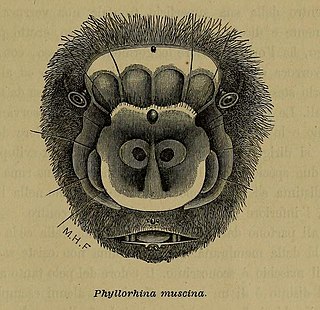
The Fly River roundleaf bat is a species of bat in the family Hipposideridae. It is found in West Papua, Indonesia and Papua New Guinea.

The Biak roundleaf bat or Geelvinck Bay leaf-nosed bat is a species of bat in the family Hipposideridae. It is endemic to the Biak Islands and Cenderawasih Bay area of Papua Province, located in Western New Guinea, Indonesia.

The Pomona roundleaf bat, Pomona leaf-nosed bat, or Andersen's leaf-nosed bat is a species of bat in the family Hipposideridae that is endemic to India.
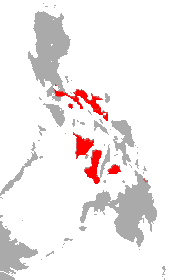
The Philippine pygmy roundleaf bat, also called the Philippine pygmy leaf-nosed bat, is a species of bat in the family Hipposideridae. It is endemic to the Philippines, where it has been recorded on Bohol, Luzon, Marinduque, Negros, Panay, and Mindanao.

Ridley's leaf-nosed bat, Ridley's roundleaf bat, or Singapore roundleaf horseshoe bat is a species of bat in the family Hipposideridae. It is found in Brunei, Malaysia and Singapore. Its natural habitat is subtropical or tropical swamps. It is threatened by habitat loss.

Sorensen's leaf-nosed bat is a species of bat in the family Hipposideridae that is endemic to Indonesia.
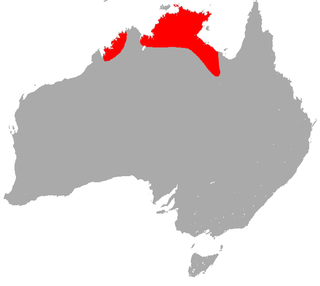
The northern leaf-nosed bat is a micro-bat of the family Hipposideridae, known as "leaf-nosed" bats. The species is endemic to northern regions of Australia. They are highly manoeuvrable in flight, and use echolocation to forage for insect prey.
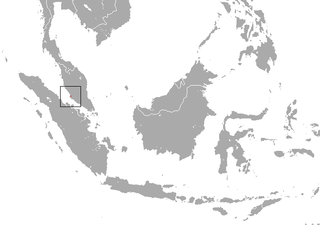
The Malayan roundleaf bat is a horseshoe bat found only in Malaysia. It is listed as a data deficient species.
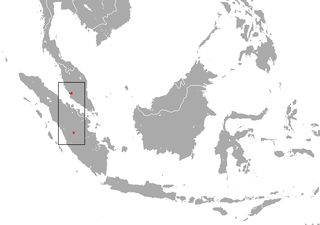
The orbiculus leaf-nosed bat, also known as the orbiculus roundleaf bat and small disc roundleaf bat, is a species of bat from the family Hipposideridae. The species has been found on the island of Sumatra in Indonesia and on peninsular Malaysia.
Griffin's leaf-nosed bat is a species of roundleaf bats. First seen in 2008, it was formally described in 2012. It is found only in Vietnam, and only at two places, Cát Bà Island in northern Vietnam, and Chư Mom Ray National Park. It is generally similar to the species complex of the great roundleaf bat, with which it shares the habitat, but has distinguishing characters. It is relatively smaller and its sound navigation, echolocation, is different.

The Phou Khao Khouay leaf-nosed bat is a species of bat found in Laos and Vietnam. It was described as a new species in 2006. It is considered vulnerable to extinction by the IUCN.

Hipposideros atrox, commonly known as the lesser bicolored leaf-nosed bat, is a species of bat found in Southeast Asia. Originally described as a subspecies in 1918, it was recognized as a full species in 2010. It uses echolocation to navigate and find prey, and roosts in caves during the day.




















